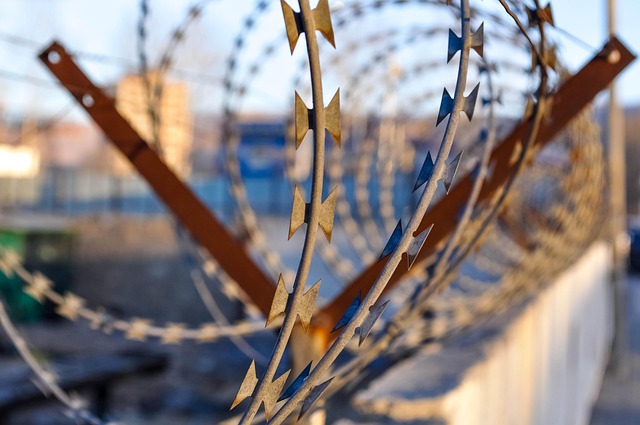Corporate Executive Protection (CEP) is a vital security strategy for organizations with high-profile executives, focusing on tailored measures to safeguard leaders' safety, security, and well-being. It integrates advanced tactics, technologies, and intelligence to protect against physical threats, cyberattacks, and emerging crises. CEP includes robust security protocols, threat assessments, personal protection details, specialized training, and adaptation to dynamic environments. In today's digital era, a strategic, holistic approach aligning protective measures with comprehensive policies is essential, empowering security teams to adapt swiftly to evolving threats and ensuring operational continuity. Effective CEP programs are built on risk assessment, robust communication, regular training, and scenario simulations, leveraging technology and skilled interceptors to mitigate risks during high-risk events.
In today’s complex landscape, ensuring the safety and security of corporate executives is paramount. “Corporate Executive Protection” goes beyond physical safety, encompassing a multifaceted approach to risk mitigation. This article explores the critical role of protective services in aligning with robust corporate security policies. We delve into defining these services, understanding their historical evolution, and highlighting key components for effective programs. Real-world case studies demonstrate successful strategies, underscoring the importance of a holistic, policy-centric approach to executive protection.
Understanding Corporate Executive Protection: The Cornerstone of Security
Corporate Executive Protection (CEP) is an essential cornerstone in the comprehensive security strategy of any organization, especially for companies with high-profile executives and valuable assets. It involves a tailored approach to safeguarding corporate leaders, ensuring their safety, security, and well-being while they perform their duties. CEP goes beyond traditional security measures by integrating advanced tactics, technologies, and intelligence to mitigate risks specific to executives’ unique circumstances.
The primary goal of CEP is to protect executives from physical threats, such as assaults or kidnapping, as well as cyberattacks that could compromise sensitive business information. This includes implementing robust security protocols, conducting threat assessments, providing personal protection details, and offering specialized training to executives. By understanding the dynamic nature of executive roles, CEP professionals can develop strategies to navigate complex environments, whether it’s securing events, managing travel safety, or responding to emerging crises.
Defining Protective Services: From Physical Safety to Risk Mitigation
Protective services encompass a range of strategies and measures aimed at safeguarding corporate assets, including executives, facilities, and sensitive information. Beyond physical safety, these services extend to comprehensive risk mitigation, anticipating and addressing potential threats. In the context of corporate executive protection, the primary focus is on ensuring the security and well-being of high-profile individuals within an organization, such as CEOs, CFOs, or other key personnel.
This involves a multi-layered approach, from traditional security measures like guard presence and surveillance to more sophisticated tactics like threat intelligence, emergency response planning, and even cyber security. By integrating these protective services with robust corporate security policies, organizations can create a robust safety net, mitigating risks and maintaining operational continuity.
Aligning Protective Measures with Corporate Security Policies: A Holistic Approach
In today’s digital era, protecting corporate executives and sensitive assets requires a strategic and holistic approach. Aligning protective measures with comprehensive corporate security policies is essential to mitigate risks effectively. This involves integrating executive protection services seamlessly into the fabric of an organization’s existing security infrastructure. By adopting this collaborative strategy, companies can ensure that every aspect of executive safety is addressed, from physical security and transportation arrangements to digital surveillance and crisis management protocols.
A holistic alignment ensures that protective services are not isolated but rather complement and enhance overall corporate security. It involves regular reviews and updates to policies, empowering security teams to adapt swiftly to evolving threats. This proactive mindset not only safeguards executives but also instills confidence in stakeholders, demonstrating the company’s commitment to asset protection and risk management.
Key Components of Effective Executive Protection Programs
Effective corporate executive protection programs encompass several key components that work synergistically to ensure the safety and security of high-profile executives. Firstly, a comprehensive risk assessment is vital to identify potential threats and vulnerabilities. This involves analyzing both internal and external factors, including personal security risks, travel destinations, and organizational vulnerabilities. Once identified, these risks can be mitigated through tailored strategies.
Secondly, robust communication protocols are essential for seamless executive protection. This includes clear channels of communication between the protective team, executives, and relevant corporate stakeholders. Timely information sharing enables proactive responses to emerging threats, ensuring a swift and coordinated effort in maintaining security. Regular training and scenario simulations further fortify the program, equipping the protective team with the skills needed to handle diverse situations effectively.
Case Studies: Real-World Examples of Successful Corporate Executive Protection
In today’s complex and evolving threat landscape, corporate executive protection has become a critical aspect of comprehensive security strategies. Case studies from around the globe offer compelling examples of how tailored protective services can mitigate risks and ensure the safety of high-profile individuals within organizations. For instance, a global financial institution implemented an innovative executive protection program that combined advanced surveillance technology with discrete operational teams. This multi-layered approach successfully prevented potential threats during high-risk events, such as board meetings and public appearances, showcasing the power of integrating cutting-edge tech with skilled human interceptors.
Another notable example involves a multinational technology corporation that faced increasing targeting from cybercriminals and physical intruders. By fostering close collaboration between their security team, local law enforcement, and specialized protective agencies, they established a robust executive protection framework. This collaborative model not only enhanced the safety of their C-suite executives but also facilitated swift response to emerging threats, demonstrating the importance of aligning corporate security policies with agile, industry-leading protective services.
Corporate executive protection goes beyond physical security; it’s a holistic approach that aligns protective services with robust corporate security policies. By integrating risk mitigation strategies, companies can create comprehensive programs that safeguard their executives and critical assets. This article has explored key components and highlighted successful case studies, demonstrating the essential role of aligning protective measures with corporate goals for effective executive protection.
